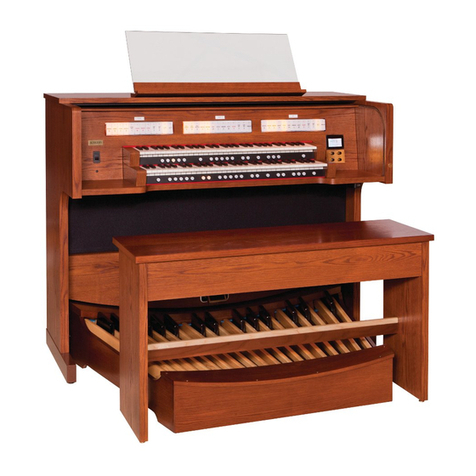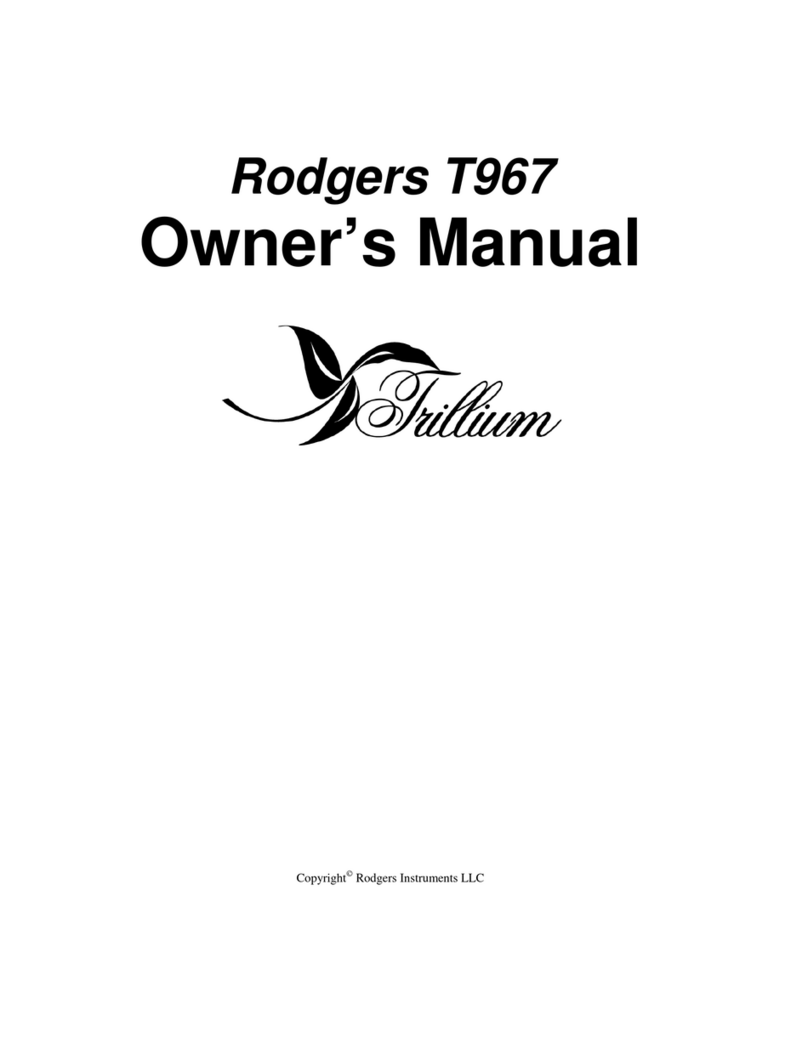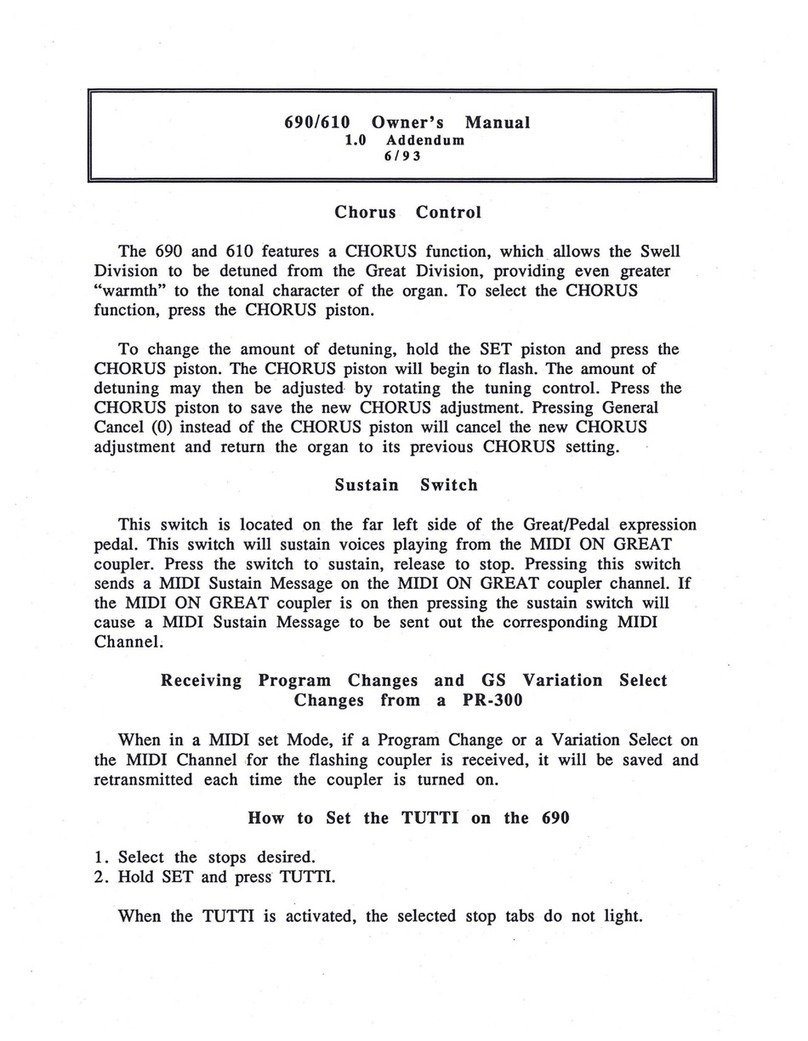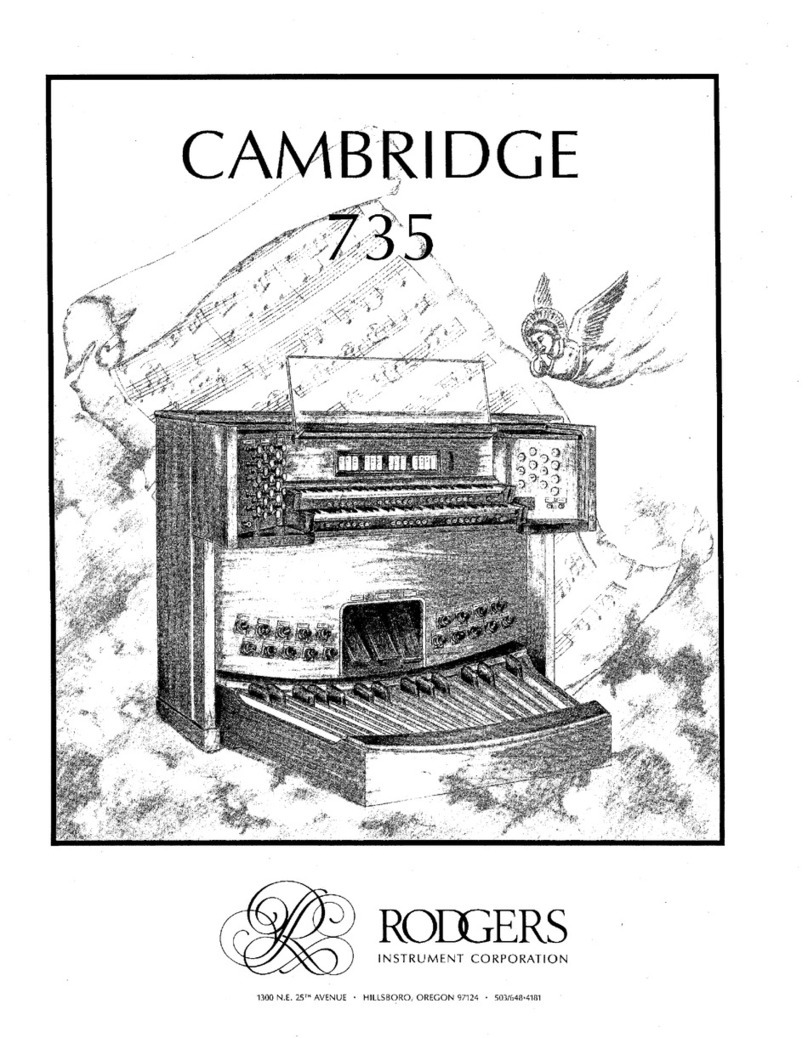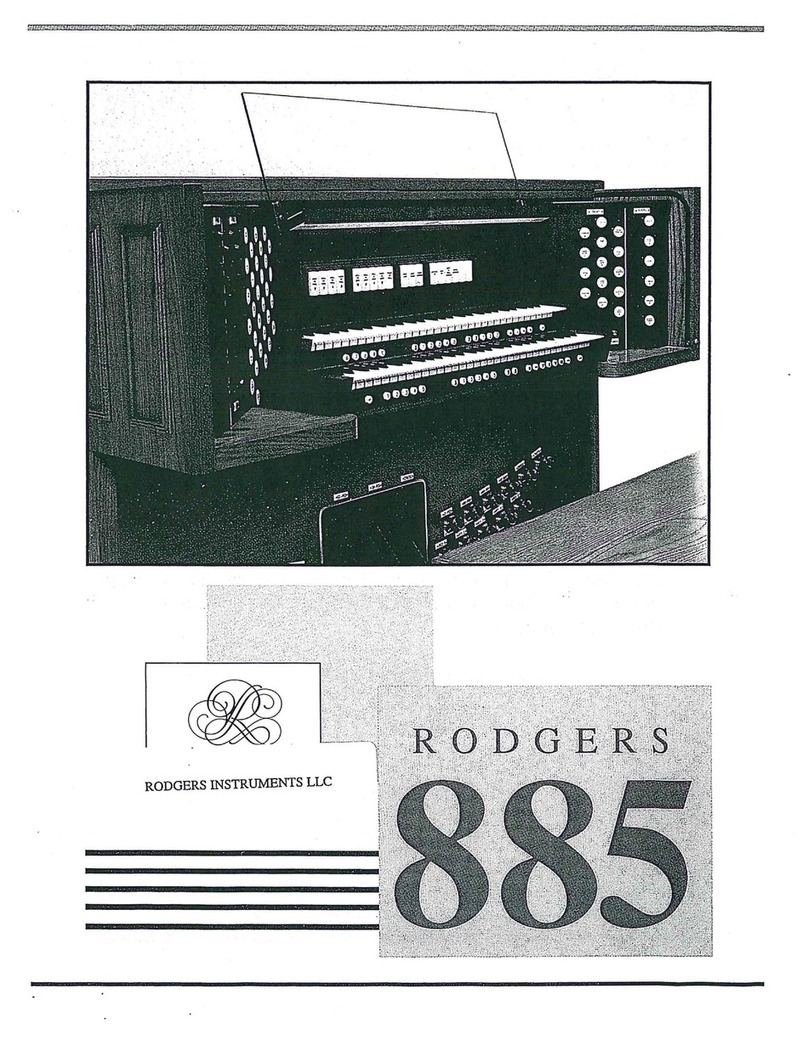
TABLE OF CONTENTS
RODGERS
TRIO
321 OWNER'S MANUAL
Introduction...
. . . . . . . . . . . . . . . . . . . . . . . . . . . . . . . . . . . . . . . . . . . . . . . . 1
The
Console
. . . . . . . . . . . . . . . . . . . . . . . . . . . . . . . . . . . . . . . . . . . . . . . . . . . 2
Solo
Manual.
. . . . . . . . . . . . . . . . . . . . . . . . . . . . . . . . . . . . . . . . . . . . . . . . . 3
Great
Manual.
. . . . . . . . . . . . . . . . . . . . . . . . . . . . . . . . . . . . . . . . . . . . . . . . 3
Accompaniment
Manual.
. . . . . . . . . . . . . . . . . . . . . . . . . . . . . . . . . . . . . . . 4
Pedal
board.
. . . . . . . . . . . . . . . . . . . . . . . . . . . . . . . . . . . . . . . . . . . . . . . . . . 4
Stop
Tabs
..................................................
. . 4
Speaking
Stops
on
the
Trio
321.
. . . . . . . . . . . . . . . . . . . . . . . . . . . . . . . . . 5
The
Tibias
. . . . . . . . . . . . . . . . . . . . . . . . . . . . . . . . . . . . . . . . . . . . . . . . . . . 7
The
Diapasons
.........
.
......................................
7
The
Strings
. . . . . . . . . . . . . . . . . . . . . . . . . . . . . . . . . . . . . . . . . . . . . . . . . . . 8
The
Reeds
.....................................................
9
Oboe
.........................................................
9
Vox
Humana
........................................
.
..........
9
Clarinet
......................................................
9
Tuned
Percussion
..................................
.
............
10
Piano
........................................................
10
Harpsichord
.................
.
.................................
10
Harp
and
Carillon
.............................................
10


